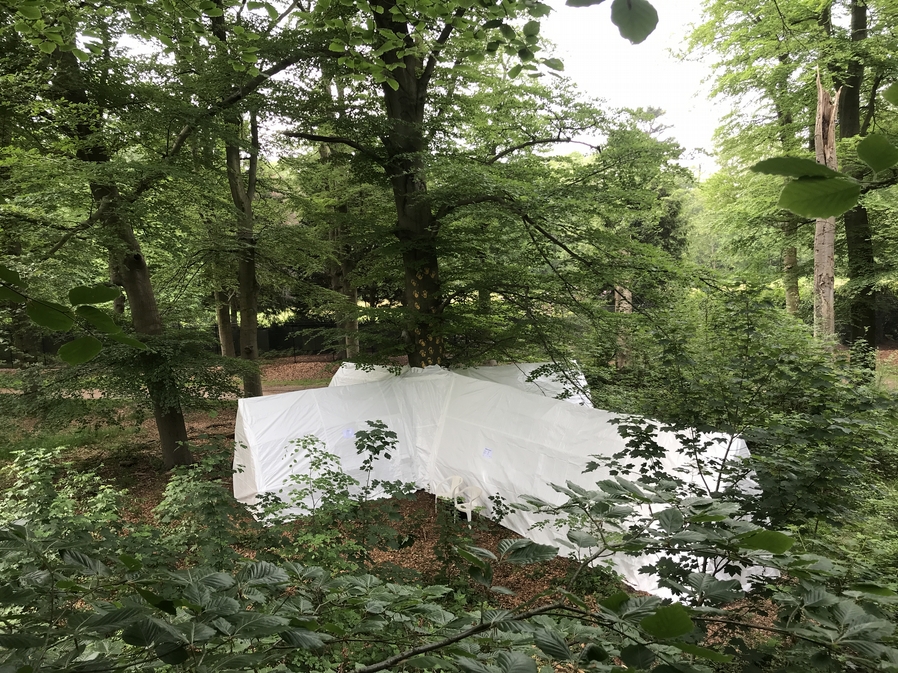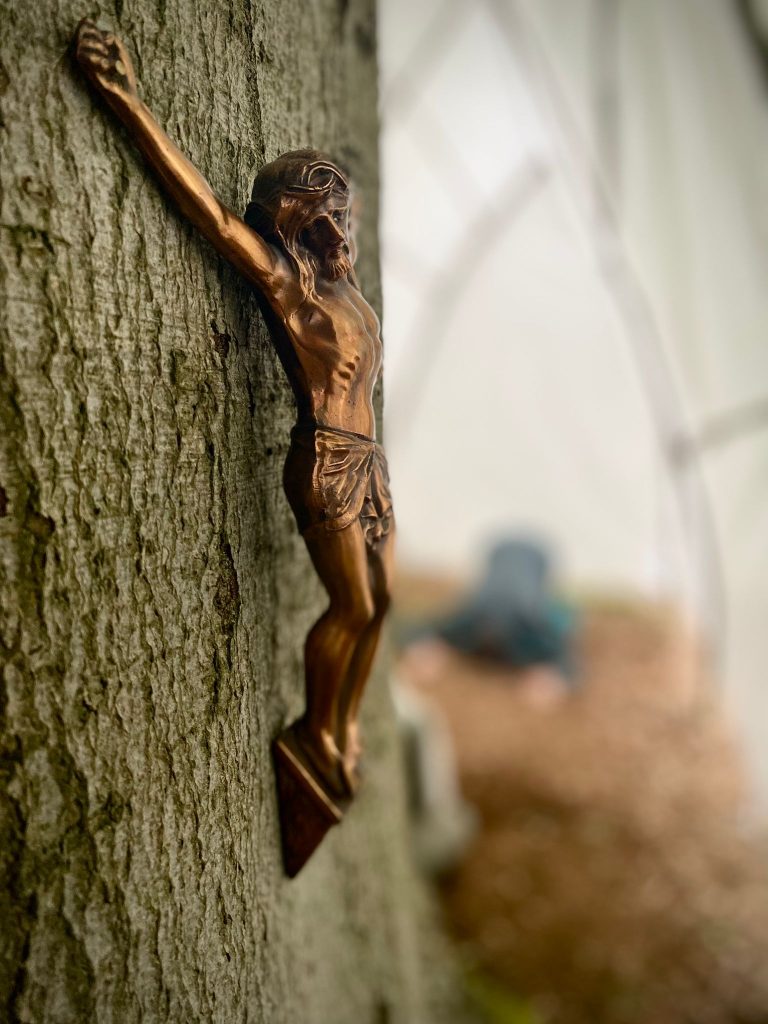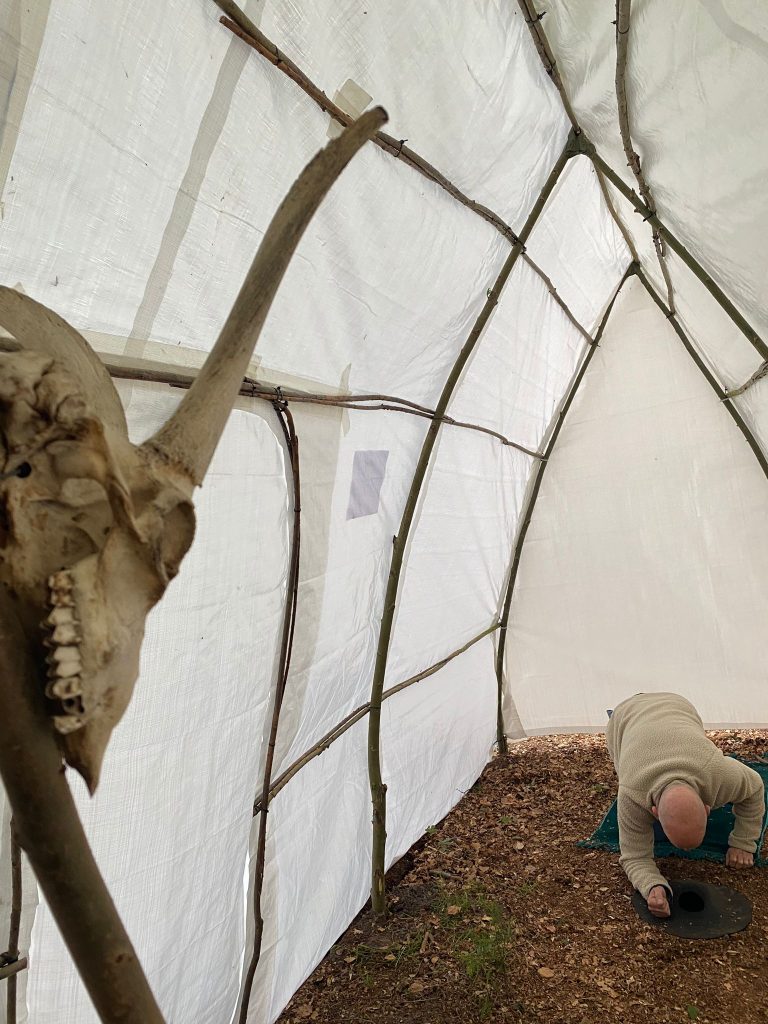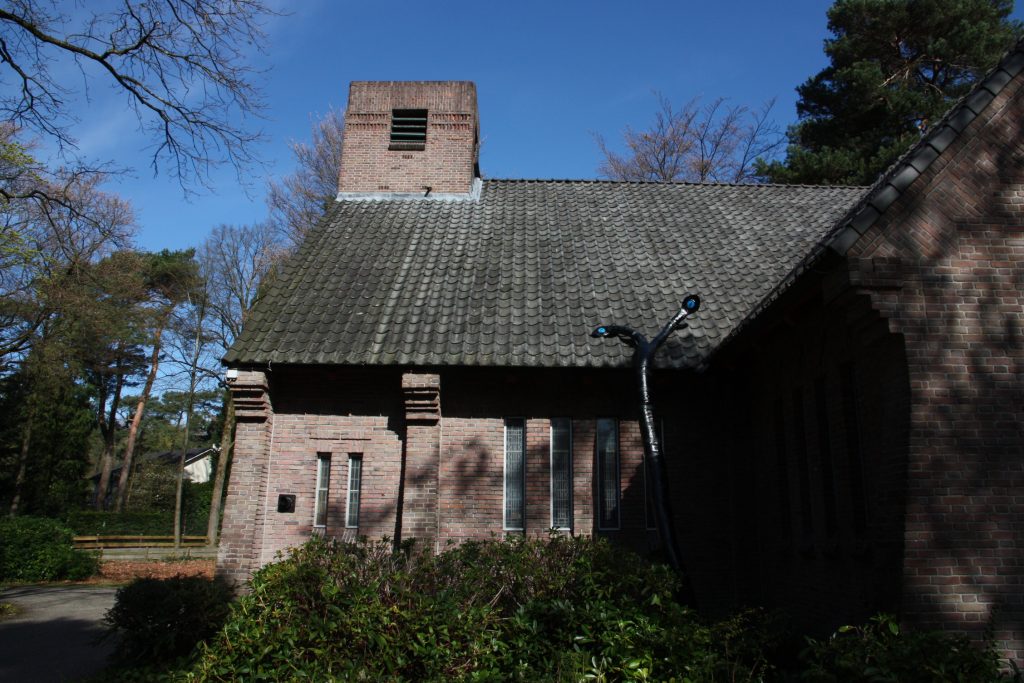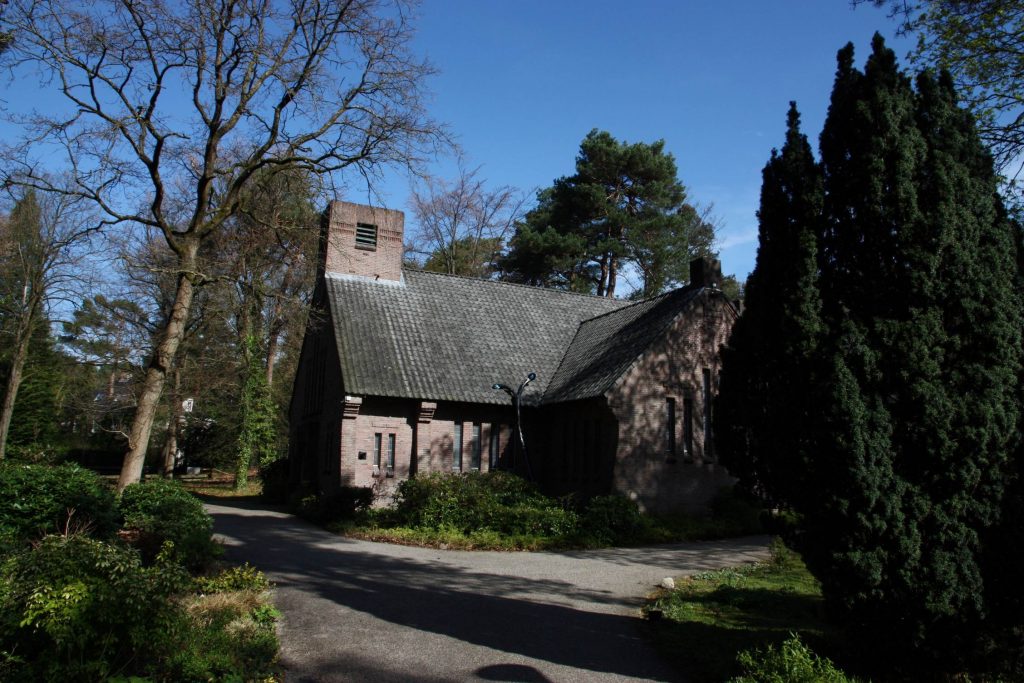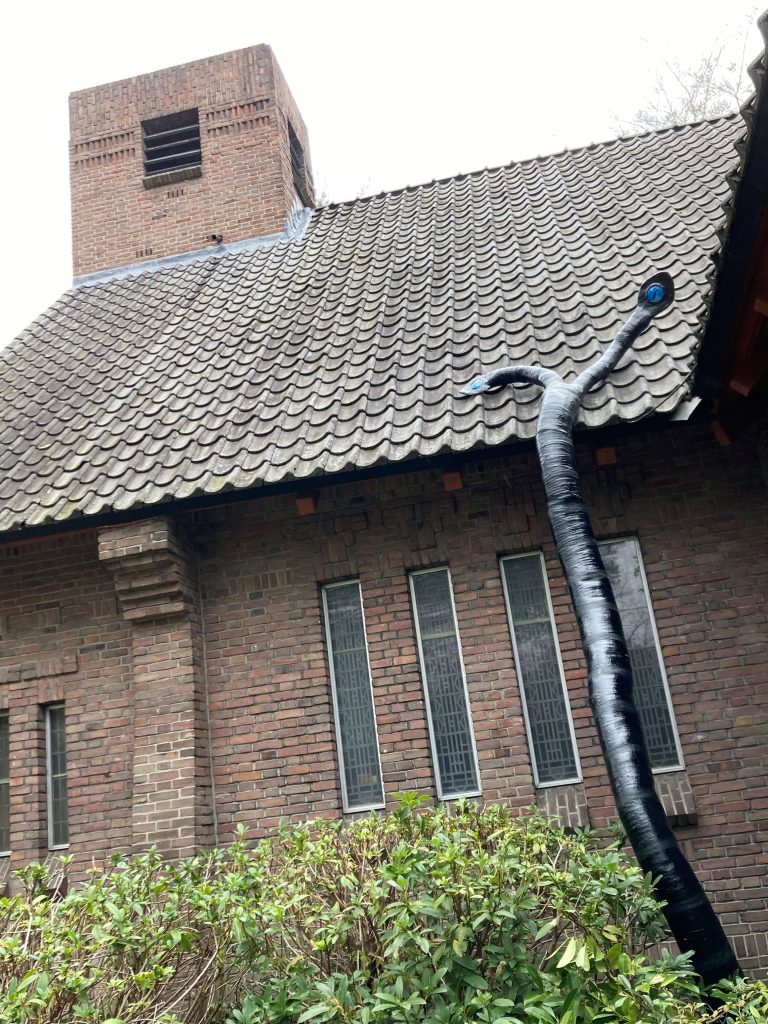Axis Mundi
At the Vuurol theater festival, right next to the fence of Princess Beatrix's home, I had the opportunity to create a work of art. It became a fourteen-meter-long cathedral/cross/human, with a tree growing out of it, right through the heart. The work is entitled “Axis Mundi”. The Axis Mundi is the Latin name for the concept of the World Axis or World Navel, also known as the World Ladder. It represents the center of reality and is the navel of space-time. It is the point where earth, higher and lower worlds are connected. Almost all religious movements, from the Indians to the Germanic people, have this concept. Usually there is both a mythical variant, such as Yggdrasil/Irmindsul, the Axis Mundi/World Tree of the Germanic people, and a physical tree in one's own reality that represents the mythical variant.
Temples often also fulfill the 'earthly' variant of the Axis Mundi. In Christianity the church can be seen as Axis Mundi.
On the tree are handprints of those who preceded us in the search.
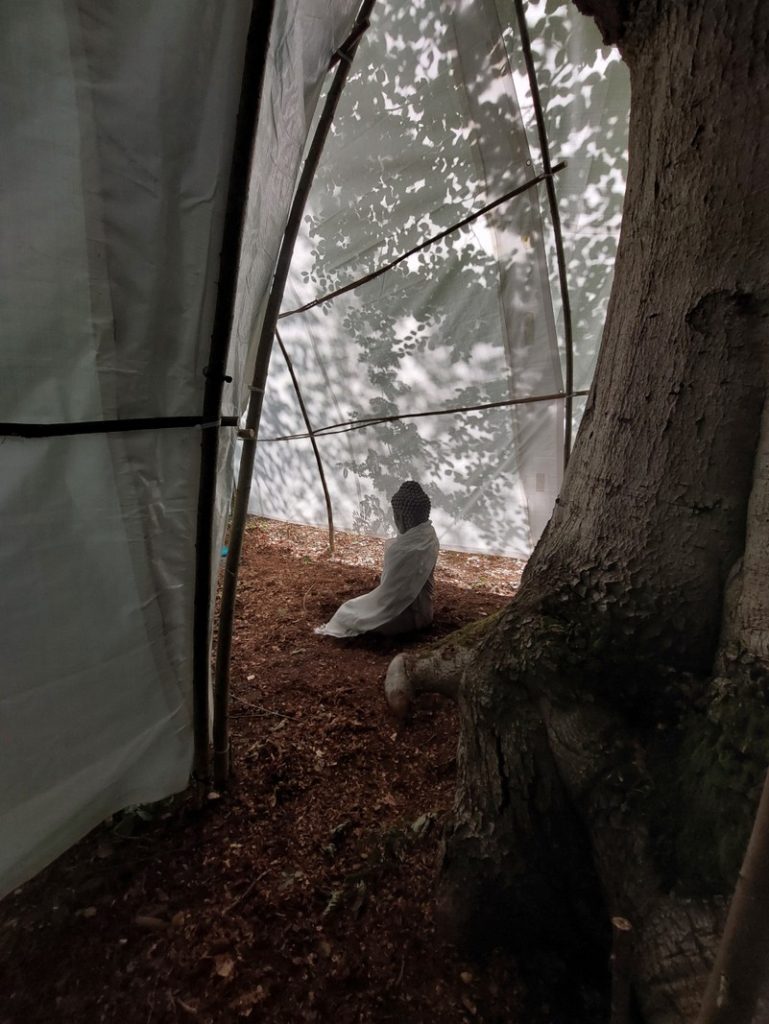
You could also go inside. There you would find rugs to kneel on in the direction of The Tree. Kneeling, you placed your face in a hole in the earth, smelling the sweet scent of spring earth. In a soft flickering light you saw a phrase. The first long 'nave' had two holes, the other three also each had a rug directed towards The Tree. In the right aisle you knelt towards a statue of Jesus, nailed to The Tree. In the upper aisle towards the Buddha, in the left aisle towards a goat skeleton.
The Axis Mundi is a concept that is perhaps not easy to understand. The modern mind is trained to think analytically, things are either this or that. In the symbolic world – on which religions are built – this does not apply. Just like in a dream, concepts can be fluid and double. In a dream you can encounter someone who is your sister and at the same time looks very different, for example. Dreams speak to you through 'association and intensity', without boundaries in time and space. In fact, this is the language of the mind anyway. Art and religion function at the interface between that language and the 'agreed' language. In a sense, the Axis Mundi also represents the connection between these different worlds.
